Despite their hostile behavior towards other birds, Blue Jays are soft-hearted towards their own species. Still, they have been observed attacking hawks, owls or cats who get excessively close. But do Blue Jays scare away Cardinals?
Let’s take a further look at these birds and their behavior.
Blue Jay (Cyanocitta cristata)
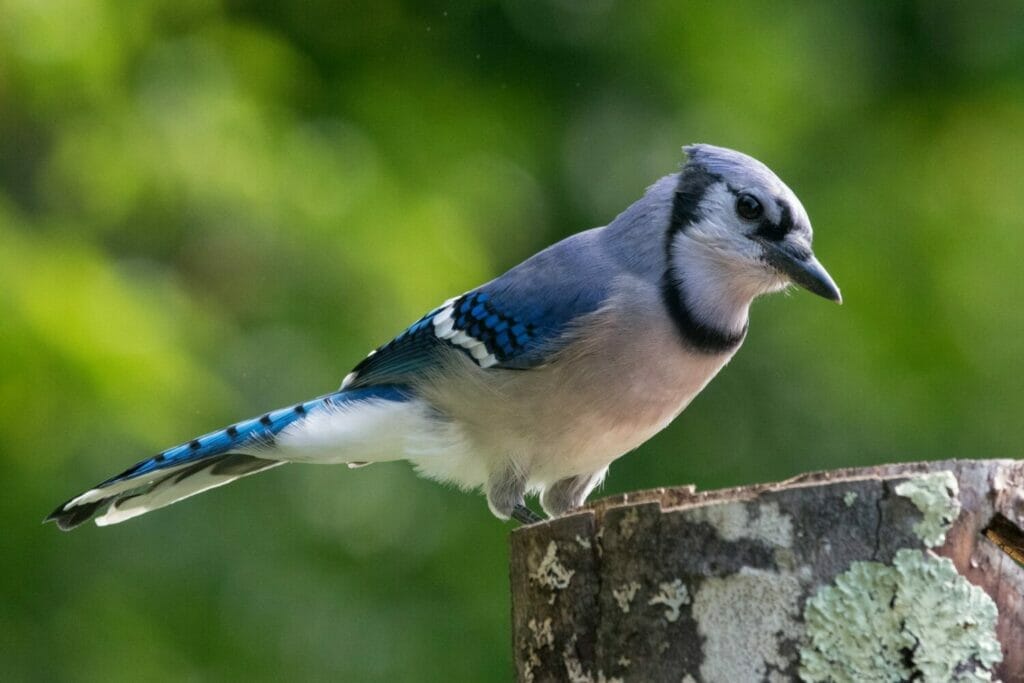
The Blue Jay is a member of the Corvidae family. This might surprise you (it did me!). Other Corvids include crows, ravens and scrub-jays. As a group, they are known for being raucous, aggressive at times and being very loud.
Distribution

As you can see from the eBird Range Map above, the Blue Jay is widespread across continental America and some population growth into Canada.
Diet
The Blue Jay diet consists of insects, fruits, seeds and bird eggs. It is the bird eggs that present the start of our problem. Other birds know that the Blue Jay will take eggs from nests and so, will not welcome them as neighbors and act aggressively towards them. Research has not confirmed how much of the diet consists of eggs but it is thought to be quite little.
In different feeding circumstances, however, the Blue Jay is on the receiving end. At bird feeders, they are often dominated and prevented from taking food by woodpeckers, grackles, squirrels and sometimes even Northern Cardinals.
The Blue Jay is also a target itself from forest hawks and their chicks from squirrels.
Behavior
During breeding time, the Blue Jay focuses on its mate and chicks. They do not establish areas of territory like other songbirds do, simply because there will be a lot of them in a single region. They are, however, very protective of their nest.
During non-breeding times and migration, Blue Jays are more sociable and will gather in groups. They are still independent within those groups and search for food for themselves. As they are targets of hawks, they do work together to raise an alarm when there are any close by.
Cardinals
There are 2 species of cardinal in the continental United States. For our purposes, we will look more closely at the most widespread species – the Northern Cardinal. The other species is the Pyrrhuloxia, which fills the gap in south-western America.
Northern Cardinal (Cardinalis cardinalis)

The Northern Cardinal is a member of the Cardinalidae family. This group also includes tanagers, grosbeak and buntings. Another surprise!
Distribution
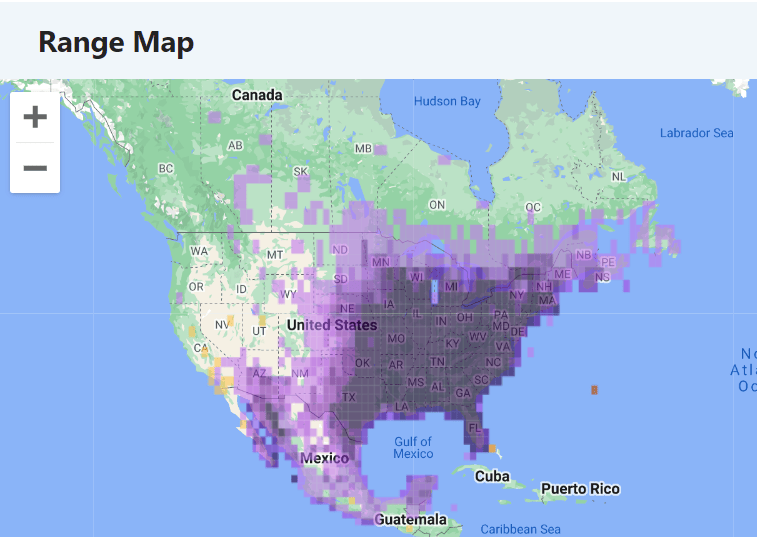
The Range Map above shows that the Northern Cardinal can be found across the eastern and central areas of America and they are also found through Mexico and into Central America.
Diet
Like the Blue Jay, the Northern Cardinal is an omnivore and an opportunist. It eats seeds, larvae, insects and fruits. The diet may vary according to what is available in its location. They are regular visitors to backyard bird feeders.
The Northern Cardinal is also food for a number of hawk species as well as owls and even squirrels. Eggs in the nest are targeted by snakes, squirrels, hawks and, you guessed it, the Blue Jay.
Behavior
The Northern Cardinal is very territorial, particularly during the breeding season. Once nests are built and eggs laid, they will defend them aggressively, sometimes joining with other birds to mob invaders.
The family and extended family will bond together during the fall season. Groups will then join together to make larger flocks, which then look for food.
What do Northern Cardinal and Blue Jays have in Common?
Both species are recognized as being very intelligent. They can manipulate and control circumstances for their potential benefit, especially when working in a group. So, it may be inferred that they presume other birds are at a lower level—intelligence wise.
They are both omnivorous and opportunists, taking advantage of what their local area offers.
Adult jays and cardinals are targets of hawks and other predators and the nests are also vulnerable to animals looking to steal eggs.
Both birds enjoy and will visit backyard bird feeders and both will bully smaller birds to get the best and most food.

Do Blue Jays Bully Northern Cardinals?
Take a wider view of the situation. Here we have 2 similarly sized birds that eat the same diet, are brightly colored and enjoy eating at bird feeders.
Is that a recipe for conflict?
Sure!
Who comes out on top? Well jays and cardinals are perfectly able to get along and eat at the same feeder. However, the Northern Cardinal is generally a shyer bird, known for being gentle, so it may lose out. But before you cry foul, remember that the Northern Cardinal is capable of being aggressive and bullying other birds. It may come off second best in a spat with a Blue Jay but that is only really because they are of similar size. The more reticent cardinal may just choose to opt out of a conflict with the jay and look for food elsewhere.
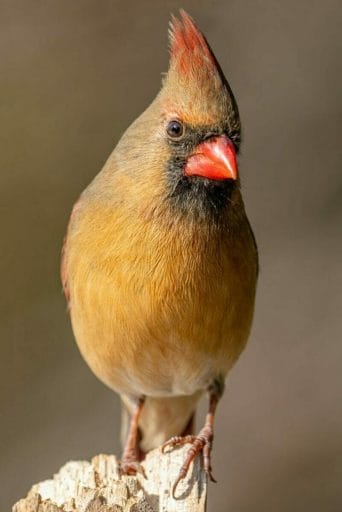
How to Ensure the Cardinal Gets Fed
A trick I do that will solve this issue is putting the food in a smaller cylinder feeder. Blue Jays may not be able to stand and eat on small cylinder feeders, so this gives a spot for Northern Cardinals to eat all they want without the risk of getting bullied.
Are Cardinals Scared of Other Things?
Cardinals are notoriously cautious of anything that appears new to them. These birds can recognize and sense danger if it’s close. When the Northern Cardinal see their own reflection, they see it as an intruder, and begin to attack and peck at it to chase it away. So, they are scared of anything that seems a threat.
How to Attract Cardinals In Your Backyard
Northern Cardinals are may well be the most desired of all yard-visiting feathered creatures. With their dynamic plumage and range of songs, it’s no big surprise that people want to attract them to their backyards.
Cardinals aren’t difficult to please. With a couple of easy modifications to your lawn and bird feeder set up, your yard could be the best option for shelter for these darling birds.

Use the Correct Feeders
You need to choose the proper kinds of feeders to suit your Cardinal friends. Your feeders should be adequately strong to help carry the birds.
The best feeders to use are platform feeders and hopper feeders. This will give them sufficient space to eat from the birdseed.
Cardinals also need easy access to water for both washing and drinking. Providing them access to bird waterers or birdbaths is the ideal method to satisfy their needs. Just make sure to remember to change the water and clean vessels as often as possible to avoid green dirt or algae buildup.
Provide Them With the Right Food
The initial step to pulling in any winged animal is to supply them with the food they like. Northern Cardinals have a solid, thick beak, which is ideal for huge seeds. White milo, safflower seeds, and black oil sunflower seeds are among Northern Cardinal’s top seed choices.
In addition to that, they also enjoy eating berries, cracked corn, and crushed peanuts.
You have to check routinely that your feeders are filled, especially during the early morning and late-night when the Northern Cardinal are likely to eat. When cardinals understand that your terrace offers food all through the year, a place where they rely on food sources, they’ll probably take up a permanent residence.
How to Attract Blue Jays to Your Backyard
Many beliefs state that the Blue Jay is a symbol of intelligence, curiosity, and communication. This implies that if a Blue Jay appears in your life, you’ll have a feeling of safety and security.
If you want a Blue Jay to wander in your yard, the best place to find them is if you’re close to a forested area. That’s the place where they principally call home. However, alternate approaches to increase your chances of spotting a bluebird include adding either a hopper feeder or tray feeder to your landscape.
Blue Jays incline toward these two alternatives more than the hanging feeders.
These winged animals are additionally inclined toward peanuts, dark oil sunflower seeds, wafer corn, milo, mealworms, suet, and safflower.
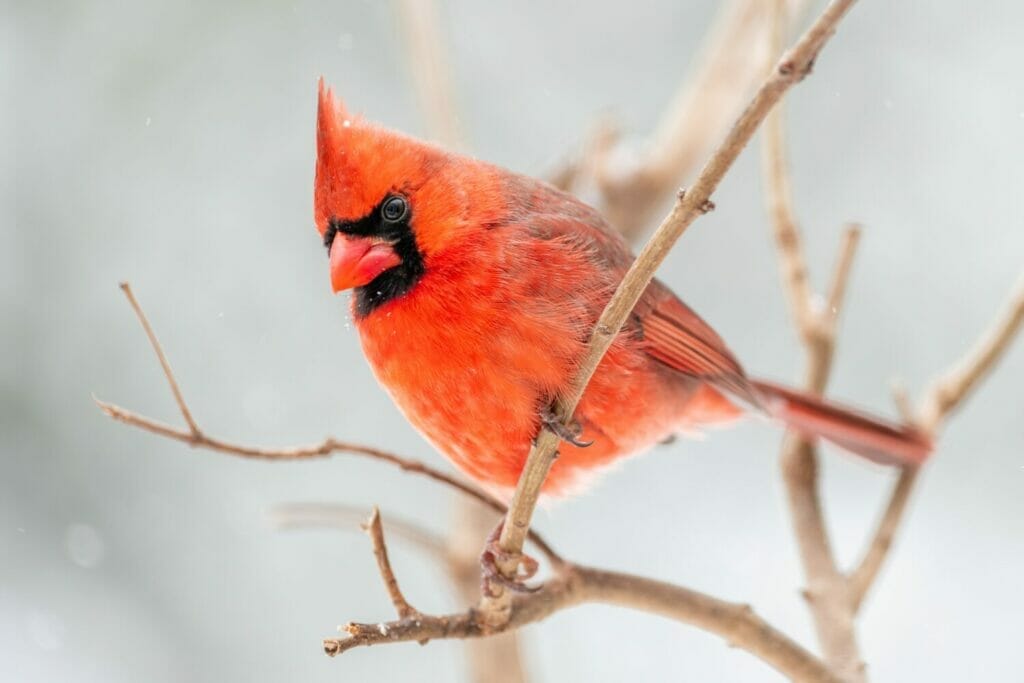
Final Thoughts
Both the Blue Jay and Northern Cardinal are gorgeous birds to have in your backyard. The jay is slightly larger and more gregarious but the cardinal is able to stick up for itself when it needs to. It just has a more passive nature. Our tip for keeping the peace – keep those feeders full of food so there is enough for every one.
Follow the tips on how to attract these birds, and they’ll surely visit you. If done correctly, they’ll even stay permanently. Good luck and happy bird sighting!
Fly high friends!
FAQ
A Blue Jay (Cyanocitta cristata) and a Blue Cardinal (Cardinalis cardinalis) are two different species of birds. Blue Jays are medium-sized birds with a distinctive blue plumage, black and white markings on their wings and tail, and a crest on their head. They are found throughout eastern North America and are known for their loud, harsh calls. On the other hand, the Blue Cardinal is not a real bird, it’s a term used to describe the Northern Cardinal when it appears to have a blue color, it’s actually a rare genetic variant of the Northern Cardinal that has a blue-gray plumage, these birds are typically found in wooded areas and suburban gardens.
Blue Jays and Cardinals have a complex relationship and it can vary depending on the circumstances. Blue Jays are known to be opportunistic feeders and they may compete with cardinals for food, such as birdseed at feeders. However, Blue Jays and Cardinals can also coexist peacefully and they may even be seen together in the same flock or at the same feeding station.
Blue Jays and Cardinals are two different species of birds and they have different physical and behavioral characteristics. They have different breeding behaviors, mating rituals, and preferred habitats. Blue Jays and Cardinals do not have compatible genetic makeups that would allow them to successfully breed and produce offspring. Additionally, hybridization between different species of birds is relatively rare in nature and it’s not something that’s commonly observed among Blue Jays and Cardinals. They are separate species and their mating and reproduction is specific to their own.





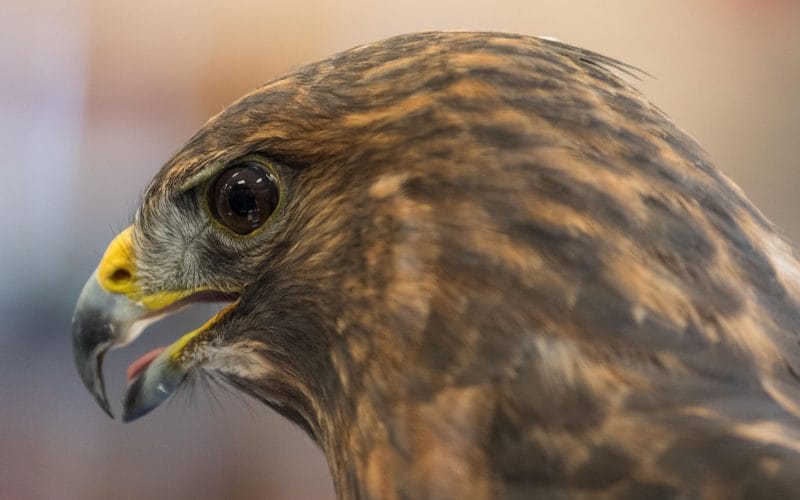
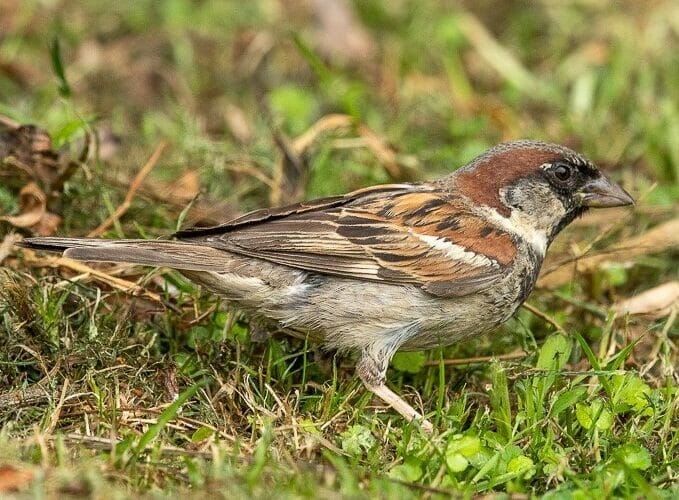


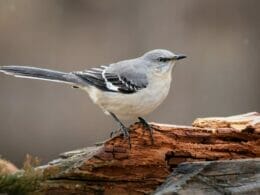
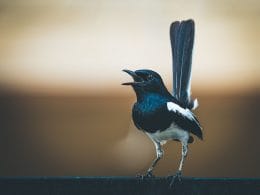
It’s totally not true that blue jays scare away cardinals.. I have them both at the feeder every day , all winter long.. All birds fly up to the feeder and try and scare away the bird on it .. Likewise the the other birds fly up and scare away the blue jays.. It’s what birds do..
Agree! We have large groups of Blue Jays and Cardinals living together in the woods behind our house along with many others (doves, blackbirds, woodpeckers, sparrows). Every bird tries to scare away another bird when it comes to getting a morsel but they still manage to live together in relative harmony.
I disagree with the above comments. I specifically googled Blue Jays and Cardinals together bc the BJ’s here are aggressive with the cardinals. They’ve basically taken over. I wanted to know if this was typical of their behavior. And sure enough it is. It’s one thing for birds to leave the feeder if another bird shows up but quite another when the BJ’s literally shove them aside assertively.